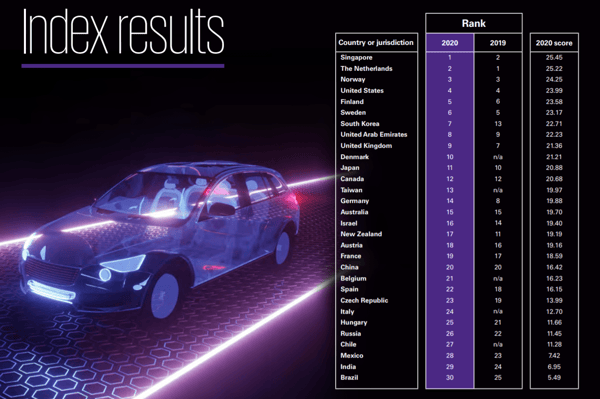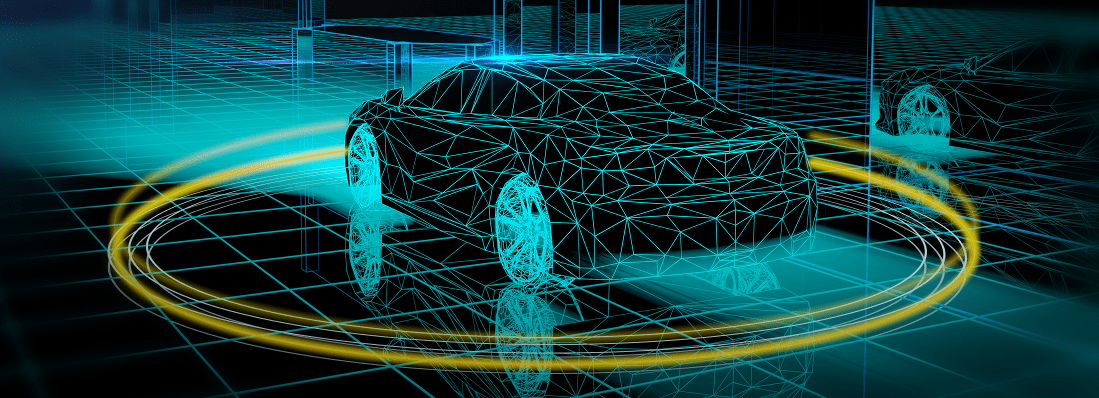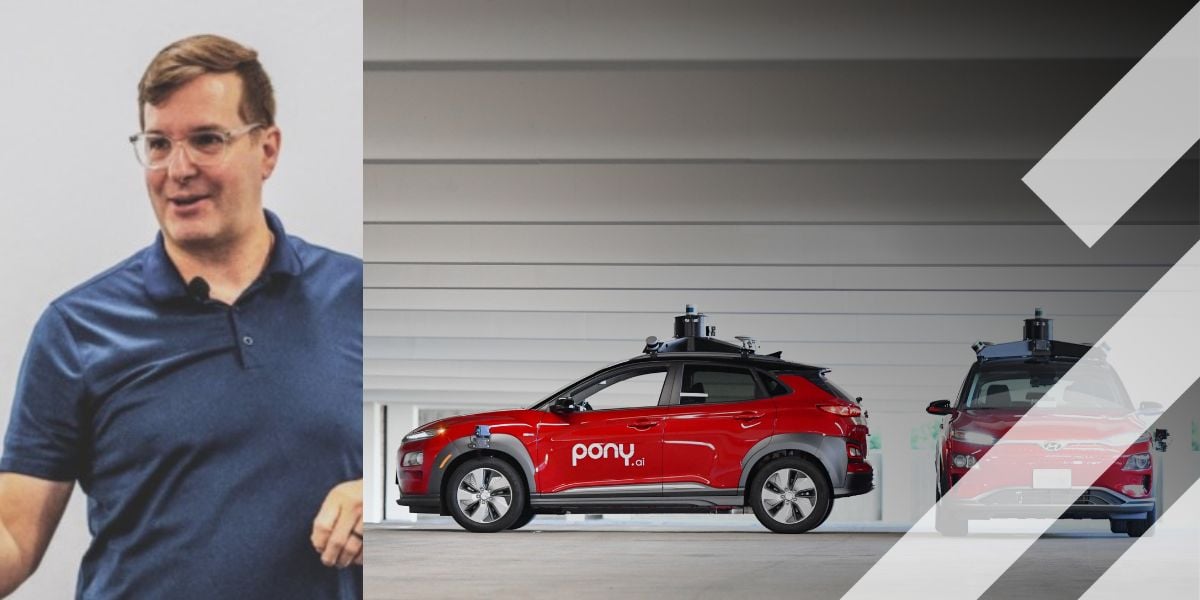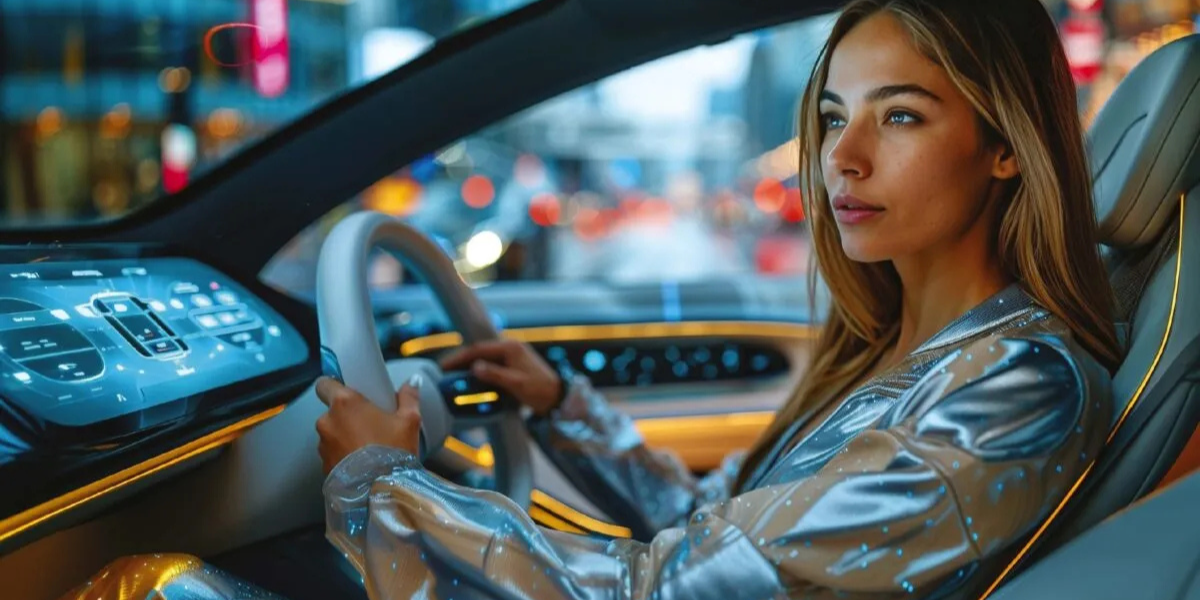On our way to autonomous driving
Autonomous driving can massively change the way we travel and is undergoing major developments. AV technology is entering a period of development maturity and the complex challenges of implementation are now the most important points of discussion - the potential of autonomous vehicle technology seems greater than ever. Reduced CO2 emissions, traffic congestion, lower travel costs and the end of searching for a parking spot could make our commute a lot more comfortable. So, what is autonomous vehicle technology and what next steps do we need to take? In this article the following points are discussed:
1.What is an autonomous vehicle and what are the levels?
2.Milestones in autonomous driving
3.Next steps
4.New vehicle technology 2020
1.What is an autonomous vehicle and what are the levels?
A self-driving car, also known as an autonomous vehicle (AV), connected and autonomous vehicle (CAV), driverless car, robo-car, or robotic car, is a vehicle that is capable of sensing its environment and moving safely with little or no human input*. Fully autonomous vehicles might not be the norm yet, but we are quite close to reaching that final level. There are five levels of automated driving specifying the capability of the vehicle driving on its own without any human intervention. The levels were developed by the SAE (Society of Automotive Engineers) in 2014.
Autonomous vehicle technology levels
Level 0: everyday car
Level 0 autonomy refers to the current everyday car. The driver performs all actions of driving: steering, accelerating and braking and the vehicle has no autonomous or self-driving controls.
Level 1: driver assistance
In the first ‘hands on’ level the human being is still in charge of driving the vehicle, but with a little autonomous help. This could be a brake boost when you edge too close to another car or adaptive cruise control system controlling your speed and distance. An automated parking system is a common autonomous driving function today.
Level 2: partial automation
In level 2 of ‘hands off’ vehicles the driver is assisted in steering, acceleration, braking and/or maintaining speed. With speed the vehicle calculates the correct distance from another vehicle and steering is controlled by centralising the vehicle within the lane. However, drivers still need to have both hands on the wheel and be prepared to take control when necessary.
Level 3: conditional automation
In the third level of autonomous vehicle technology the driver can sit back and let the vehicle drive. This is also called ‘eyes-off’ driving, meaning the driver can focus on something else such as using a mobile phone. Many level 3 vehicles don’t need any human intervention when driving less than 60 km/h. This can only work under ideal road conditions.
Level 4: high automation
In this high, ‘mind off’ automation level vehicles can fully drive on their own, autonomously steering, accelerating and braking. They respond to obstacles and monitor road conditions. Again level 4 can only be activated when road conditions are ideal. The vehicles cannot negotiate more dynamic conditions like major obstacles or traffic jams.
Level 5: full automation
In level 5 vehicles can fully operate autonomously (‘steering wheel optional’): from steering, accelerating and braking to responding to other obstacles or road or weather conditions. This is possible by the use of Artificial Intelligence and data points generated from sensors in roads, speed bumps or traffic lights. Autonomous vehicles produce a lot of data: up to 4TB per hour. Artificial Intelligence is needed to ensure real-time response.
2.Milestones in autonomous driving
Although we might have become closer to level 5 automated driving, experiments have been conducted on automated driving systems (ADS) since at least the 1920s. The first trials began in the 1950s. The very first automated car was produced in 1977 in Japan and the vehicle required specially marked streets interpreted by two cameras on the vehicle.
A major milestone was achieved in 1995, with CMU's NavLab 5 completing the first autonomous coast-to-coast drive of the United States. Of the 4,585 km between Pittsburgh, Pennsylvania and San Diego, California, 4,501 km were autonomous (98.2%), completed with an average speed of 102.7 km/h.
From 2016 to 2018, the European Commission funded an innovation strategy development for connected and automated driving. Moreover, the Strategic Transport Research and Innovation Agenda (STRIA) Roadmap for Connected and Automated Transport was published in 2019.
In October 2018, Waymo announced that its test vehicles had travelled in automated mode for over 16,000,000 km, increasing by about 1,600,000 kilometres per month. In December 2018, Waymo was the first to commercialise a fully autonomous taxi service in the US, in Phoenix, Arizona.
In 2018 China deployed a set of national standards for testing smart autonomous cars on roads, which is expected to accelerate the technology’s development. John Frazer, Chief Communication Officer at the Decentralised Autonomous Vehicles (DAV) Foundation, said: 'The moves in China are a welcome and overdue effort by a central government to harmonise an autonomous vehicle ecosystem. Without common standards and protocols, there is a risk of similar regional variations hampering adoption and growth – both physically and digitally. China’s efforts to regularise development with a common standards base is a strategy that other countries, as well as vehicle manufacturers, can learn from as they begin to make capital investments in smart infrastructure, services and vehicles.'
3.Next steps
The World Health Organization estimates that there are 1.35 million road deaths and 50 million injuries annually, with human error responsible for around 95 percent of cases. Could AVs have the potential to reduce these casualties dramatically?
At a global ministerial conference on road safety held in Stockholm in February 2020, participants recognised that “advanced vehicle safety technologies are among the most effective of all automotive safety devices” and called for countries to ensure that all vehicles sold by 2030 include safety performance technology. Although AVs are said to be much safer than human-driven vehicles, governments are understandably concerned to ensure that AV technology is as safe as possible.
Safety
Referring to Vision Zero adopted in 1997 that emphasised that no-one is killed or suffers lifelong injuries from road traffic accidents, the potential of safe autonomous driving has become an essential point of discussion. The tragic death of a pedestrian by an AV in 2019 resulted in an outcry and low tolerance for accidents caused by technology. Governments need to set policy. However, this either takes a very long time or the safety bar has been set too high and this could slow down the introduction.
The current metrics verifying the safety of AVs are miles and disengagements. AVs are subject to millions of miles of physical driving; engineers record each disengagement, or the occasions when the driver has to take back control. Foretellix, an Israeli start-up participating in our webinar on August 25, believe that verifying the safety of an autonomous vehicle through a miles-driven approach is time-consuming and costly. Foretellix’s approach is based on the Quality of Coverage instead of the Quantity of Miles. The company has developed intelligent automation and analytics tools to orchestrate and monitor hundreds of millions of driving scenarios including edge cases, providing the confidence required to allow the broad deployment of ADAS and autonomous vehicles and to unleash the full potential of the autonomous revolution.
‘The time that is needed to solve the ‘edge-cases’ to make it work in real life, will probably hold off the introduction of self-driving solutions on our public roads any time soon.’ - Stijn de Groen Lead for Mobility 2030 KPMG in the Netherlands.
Privacy issues
For governments autonomous driving offers a huge opportunity in optimising their road infrastructure and traffic flows. Knowing the position of each car, its destination and speed, a local government can set speeds and routes by intelligent traffic signal systems or intelligent speed bumps. Sharing this personal data with the government might be an obstacle for some cultures. The European Union has strict privacy rules in its General Data Protection Regulation (GDPR), whereas China or the US provide less protection.
Lack of data
Autonomous driving places significant demand on AI. Some cases have showed problems regarding unreliable behaviour, while some AI models have little or no data. 'We overestimated the arrival of autonomous vehicles,' said Ford’s chief executive officer Jim Hackett in April 2019. To achieve level 4 of autonomous driving ideal road conditions are necessary, communicated by sensors in roads and traffic lights sharing data and high-quality mapping. Digital infrastructure, allowing vehicle-to-infrastructure (V2I) communication, is potentially the solution to this. V2I systems use a centralised traffic management system to optimise the use of a region’s highways by orchestrating how vehicles operate for the benefit of all users.
Impact on transport systems
Many countries want to use AVs to reduce traffic congestion and increase the popularity of shared transport. Chile, Denmark, Finland and Norway have trialled slow-moving minibuses, while Spain are using use these autonomous buses for tourism in environmentally friendly areas; in Australia they are deployed to transport elderly residents in a retirement village.
However, in the US, the development has been focused on driverless private car and taxi services, which will only increase the number of vehicles on the road.
In Singapore bus drivers are being retrained as bus safety operators under the city-state’s plan to introduce driverless buses from 2022. Autonomous vehicles will cut labour costs, making travel more affordable and it allows better public transport opportunities in crowded cities.
Impact of COVID-19
The Covid-19 pandemic has led to several trials being suspended. Chris de Veer, sector manager smart mobility for the Province of North Holland, says: ‘In the short term the outbreak has obviously slowed down several trials. We can only test live on street and in a realistic scene. I am not sure if this outbreak will slow it all down or speed it up in the long run. Maybe after Corona we will use less public transport and more shared vehicles or taxis. In San Francisco self-driving Ubers seem to be a good alternative for public transport. An unwanted effect is an increase in congestion and worsening traffic flows.’
The pandemic could boost the case for the adoption of AVs. The disease has made shared vehicles less attractive to users, but a regularly cleaned, publicly managed AV minibus might feel better than a vehicle from a private ride-hailing service. In other industries, the pandemic has increased both demand and opportunity for automation. AVs have generally been used to make deliveries rather than transport people, or to move tests from a drive-through location to a lab, with no human supervision on isolated routes.
4.New vehicle technology 2020
How ready are we for autonomous driving? According to the Autonomous Vehicles Readiness Index (AVRI) Singapore ranks first and the Netherlands ranks number 2 globally. Find the entire list below:

What technologies do these countries apply? A short summary of the latest technologies with regards to vehicle sensors, Vehicle-to-Infrastructure (V2I) and Advanced Drive Assistance Systems (ADAS) follows.
Vehicle sensor technology 2020
It is supposed to be the new cornerstone of self-driving vehicles: laser radar or LiDAR systems. Laser radar works with other sensors including cameras, ultrasonic and long-range radar to help the cars and trucks of tomorrow find their way around.
Vehicle-to-Infrastructure communication (V2I)
Smart vehicles require smart roads. Vehicle-to-Infrastructure (V2I) communication is the wireless exchange of data between vehicles and road infrastructure. Sensors in road markings, intelligent traffic lights systems, intelligent speed bumps , communication with traffic signals are all part of optimising our way to autonomous driving.
Development of V2V and V2I technologies has progressed smoothly in Japan, South Korea, and China. The automotive manufacturer Toyota anticipates integrating a 5.9-gigahertz intelligent transport system into its automotive line in 2021. By doing this Toyota and Lexus vehicles will be able to communicate with one another and with applicable – likely privately owned – infrastructure.
‘To get the full benefit of connected and automated vehicles, you need the infrastructure outfitted. Infrastructure can carry and share information about crashes, traffic jams, sharp curves and with recommended speeds. You can also dynamically change recommended speed based on weather or other conditions.’ - James Sayer, University of Michigan Transportation Research Institute
Advanced drive Assistance systems (ADAS)
Safety of vehicles is most important. ADAS or advanced drive assistance systems can automate certain functions of the driver. A well-known system is adaptive cruise control (ADC) or park assist function.
Another technology that can improve the safety of drivers is fatigue recognition that alerts you when your attention is no longer fully focused on the road. For example, some systems can recognise when the driver is showing signs of drowsiness. The system will warn the driver so that accidents can be prevented.
One step ahead is the Mercedes-Benz Vision AVTR that incorporates biometrics. This new concept car not only detects your pulse, it also detects your breath, has no steering wheel and recognises the driver with a control system activated with the palm.
Sources
Taeihagh, Araz; Lim, Hazel Si Min (2 January 2019). "Governing autonomous vehicles: emerging responses for safety, liability, privacy, cybersecurity, and industry risks". Transport Reviews.
Share your story
Do you have an innovation, research results or an other interesting topic you would like to share with the professionals in the infrastructure, traffic management, safety, smart mobility and parking industry? The Intertraffic website and social media channels are a great platform to showcase your stories!
Please contact our Sr Brand Marketing Manager Carola Jansen-Young.
Are you an Intertraffic exhibitor?
Make sure you add your latest press releases to your Company Profile in the Exhibitor Portal for free exposure.
Get up to speed on the mobility industry - our newsletter straight to your inbox!



.png?h=600&iar=0&w=1200)




